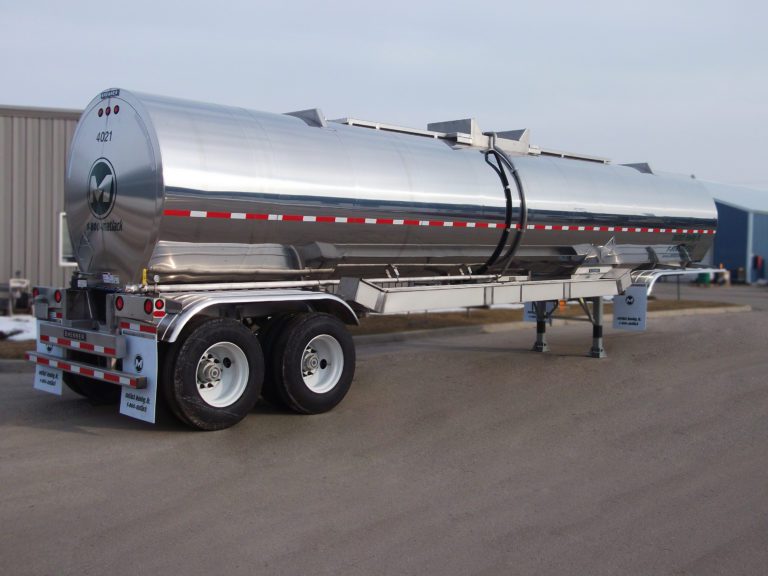How does Pre-Loading Improve Truck Driver Efficiency?
The demand for freight transportation in excess of driver availability is likely to remain elevated for the foreseeable future. Driver recruitment has not kept pace with the customer expectation of near immediate delivery. Regulatory requirements, safety concerns, lifestyle choices including time away from family, compensation and other factors make recruitment of drivers difficult. The impacts associated with a shortage of drivers will increase as the country re-opens and industrial production and the economy rebound.
The driver shortage is particularly severe for the tank truck sector and the chemical industry which have more stringent requirements for driver experience and safety. Trade Associations and industry are actively recruiting, the current administration has proposed regulations to improve driver eligibility, and new technologies are in development, but these recruitment strategies will take time to implement. In the meantime there is an immediate need to increase the time drivers spend on the road.
What are the Barriers to Driver Efficiency?
Though truck drivers are a significant part of port logistics, they are also highly dependent on external parties, particularly shippers and receivers. Drivers are expected to cover about 2,000 to 3,000 miles a week, which equates to around 500 miles per day.
A research study conducted by MIT Freight Lab (May 2020), indicated that CDL drivers on average spend only (7) seven hours a day driving out of the 11 hours allowed by the Hours of Service (HOS) rule. Clearly there is room for improving efficiency and miles travelled. The time drivers spend loading and unloading in depots, terminals and manufacturing facilities, as well as time spent on breakdowns and equipment repairs contribute to delivery delays and increase the cost of goods.
Some of the barriers a driver can face from gate-in to gate-out which impact turnaround time include:
- Port congestion
- Cargo delay
- Traffic flow disruptions
- Road construction
- Inclement weather
- Maintenance issues
- Product Sampling
How to Reduce Truck Turnaround Times

Truck turnaround times may be improved by investing in pre-loading, automation, timely maintenance and technology. Strategies that add value to the supply chain by increasing the time driver’s spend driving.
- Pre-loading: Lowering truck turnaround time is a key performance indicator (KPI) for manufacturers, terminals and logistics companies. Pre-loading is a strategy employed by some of these facilities where a driver’s next delivery is “pre-loaded” into the transporting equipment unit, either a tank trailer, ISO tank containers or dry good container, prior to the driver arriving on-site. This requires the shipper to add similar transportation equipment units so that one unit may be loaded while the other unit is still on the road.
The benefits of Pre-loading include:
-
- Expediting the driver’s departure thus reducing his time on-site.
- The facility has greater scheduling flexibility which often reduces overtime costs.
- Drivers may start their day earlier to minimize traffic on the road and since they don’t have to wait for loading they can get on the road faster.
- Additionally, shippers can offer customers earlier delivery time windows.
- Fleet Maintenance: We’ve all seen the remnants of a blown tire on the road. Improper tread wear, mechanical breakdowns and loads that are overweight or not secured properly can reduce driver miles traveled. Companies which employ recent model year equipment, implement timely routine maintenance, and use the proper equipment for their freight have fewer emergencies on the road. This improves driver efficiency and driver satisfaction.
- Technology: Technological innovations also improve driver efficiency. GPS systems aid in route planning and can guide drivers on how to avoid traffic jams. Barcodes, scanners and hand-held tablets more accurately monitor freight and streamline formerly paper transactions during cargo drop-off and loading. Routine tasks such as vehicle inspections and trip logs are completed faster with improved accuracy and consistency. Advances in automotive technology also assist with the maintenance issues described above. Signals will alert drivers to shifting loads, low or flat tires, and other safety concerns that could delay the driver from reaching their destination. Employing technology results in a more productive work environment.
Your Equipment Matters
Driver efficiency and satisfaction is a top concern of chemical manufacturers, chemical distributors, and other liquid bulk freight haulers. Driver compensation is based on miles traveled and it has been proven that higher levels of driver satisfaction are linked to higher compensation. If you’re ready to improve driver efficiency and satisfaction by implementing pre-loading or adding younger equipment units to your fleet reach out to Matlack Leasing, LLC’s. Let us provide you with the right equipment to increase your liquid bulk transportation utilization.
Contact us or give us a call at 1-800-MATLACK so we can provide our 25+ years of industry experience and equipment knowledge to solve your transportation equipment challenges, lower maintenance costs and improve driver utilization.
Sources:
- Cassidy, William B. Outlook 2021: Latest US Driver Shortage Requires Long-Term Solutions, JocNewswire, 20 Jan. 2021, www.joc.com/trucking-logistics/labor/outlook-2021-latest-us-driver-shortage-requires-long-term-solutions_20210120.html.
- “How Truck Turnaround Time Affects Port Logistics.” Container XChange, 24 June 2020, container-xchange.com/blog/truck-turnaround-time/.
- “Interstate Truck Driver’s Guide to Hours of Service.” FMCSA.dot.gov, Federal Motor Carrier Safety Administration, Mar. 2015, www.fmcsa.dot.gov/sites/fmcsa.dot.gov/files/docs/Drivers%20Guide%20to%20HOS%202015_508.pdf.
Shabat, Ben. “Top 6 Challenges Facing the Trucking Industry Today & How to Overcome Them.” Become, 14 Mar. 2019, www.become.co/blog/6-challenges-us-trucking-industry/. - “Truck Driving Per Mile Salary.” AllTrucking.com, www.alltrucking.com/faq/per-mile-trucking-salary/.
- Zhang, Mei Qing, and Adam Buttgenbach. “Utilization of the American Truck Driver.” MIT.edu, MIT, May 2020, dspace.mit.edu/bitstream/handle/1721.1/126383/scm2020-buttgenbach-utilization-of-the-american-truck-driver.pdf?sequence=1&isAllowed=y.
